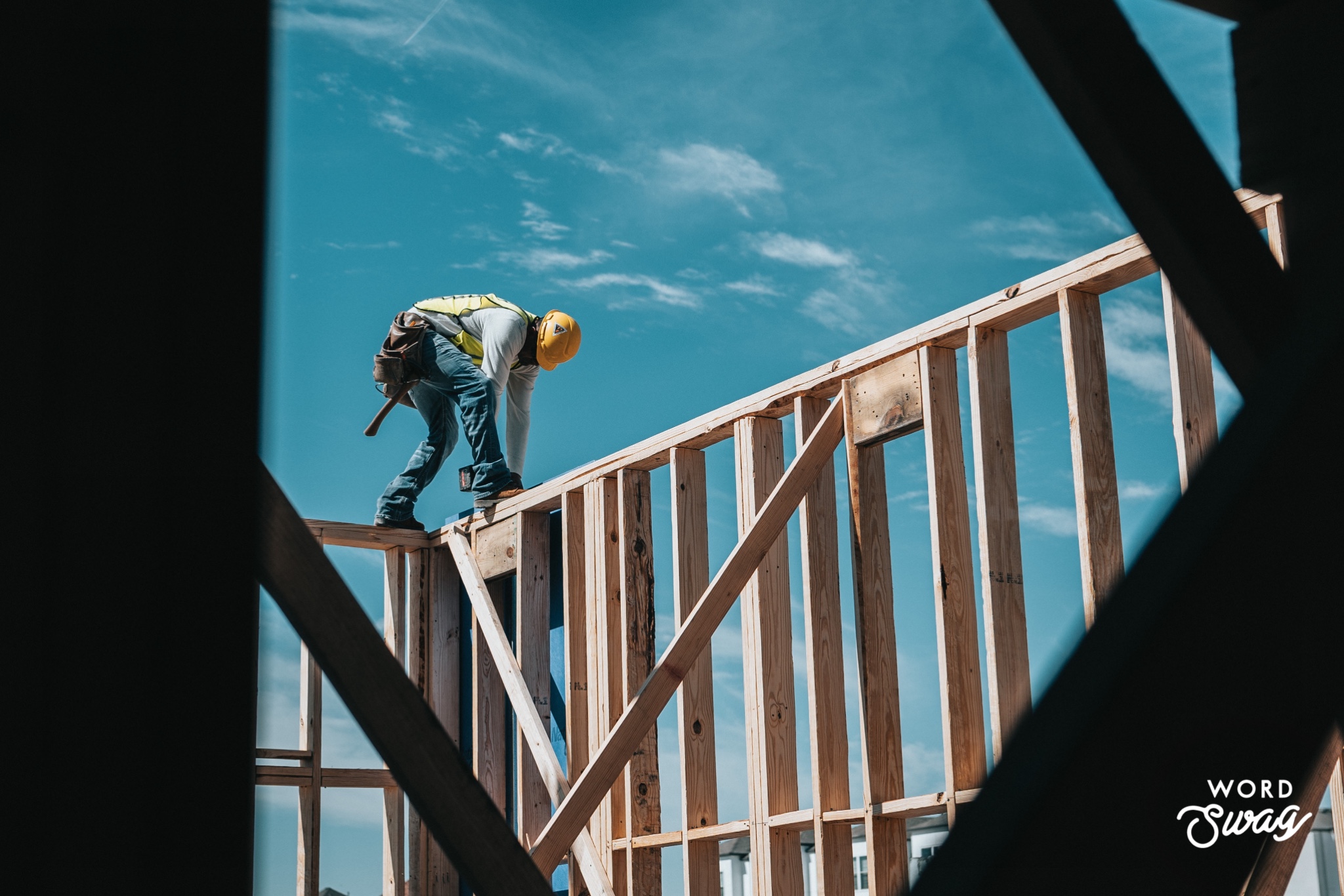God is an architect and builder. Creation is his house. One part of the house was finished from the beginning. God created his heavenly palace complete. It was a turn-key job. The earth, however, he gave to his son, Adam, as a project (Ps 115:16). God provided his son all the raw materials and the blueprint to complete his mission. Once the earthly house was finished, the breach between heaven and earth created on the second day of the creation week would be reconciled.
The original separation of heaven and earth was not caused by sin. The division was a design feature of the original creation, and the maturity of the earth was man’s mission before sin entered the world. When Adam sinned, the separation was deepened. From that time forward, the project to build a house in which God would be pleased to dwell, uniting his heavenly home to an earthly home, was crippled by sin.
God must have a house that is fit for him. His house must reflect his tastes, character, or, in short, his glory. This may seem like an obtuse theological concept, but it is more common in our daily experiences than you might think. Architecture and all its adornments reflect the character and culture of the builders. How you design, keep, arrange, and decorate your house reflects the character of your family, what you prioritize, how you live your lives together, and your personality. You can see a family’s personality in a house. Houses are extensions and expressions of our character and how we live or intend to live our lives.
If you are an open, welcoming family and had the chance to design your home, you might have a wide open floor plan with few walls where attention is drawn to gathering places where your family and friends spend time together. You may want many walls and closed-off spaces if you are more hermit-like. If your family is effervescent, your walls’ colors will reflect a more festive vibe. If you are somber, you might prefer dark, wooden paneled walls.
Your surroundings take on your personality. This is true in families, churches, and broader society. How we design, build, and adorn our surroundings reveals our “glory,” our character, personality, and tastes.
God’s intention for creation was to be an extension of and express his character. His personality is to be seen in every aspect of his house. Man’s project was to make a house that reflected God’s glory.
To make this house, the ones who design and build it must first share the character of God. Culture determines the way we build structures. Our architecture tells who we are and who we aspire to be. For this reason, man must share the culture of Father, Son, and Spirit to complete this house-building mission. The pattern must first be in man. Then and only then will man be ready to achieve the mission to build a house for God’s name. God originally made man as his image with the ability to grow more and more into his likeness to complete this mission. But sin distorted this image and, consequently, deformed the house-building project.
God needs a faithful son to complete this project, a man in whom is the impress of heaven, God’s house.
That man has come. He is the Word made flesh.
John 1:1 introduces us to the Word. He is God, the one through whom all things were made in the beginning. As God, he is a part of the heavenly culture. He knows God’s character, personality, and tastes because all of God’s fullness dwells in him.
But he is the Word made flesh. He is man, the flesh of Adam though without sin. As such, he is qualified to take up the mission to build the earthly house.
As the Word made flesh, he is the beginning of this new house. In him heaven and earth are united. John’s wording in John 1:14 is telling. Where he says that he “dwelt among us,” he uses a verb that speaks of pitching a tent or dwelling in a tent. It is the same word used to speak of the Tabernacle of old. The Tabernacle was the earthly residence of God’s glory, the place where heaven and earth were joined. The Tabernacle was a glorified creation constructed by the Spirit of wisdom through the men he gifted (Ex 31:3). The Tabernacle was also a model of what the world would become. It was a glorified creation. This meant the Tabernacle was a prophetic blueprint for man to construct the world.
Jesus is the place where heaven and earth are joined, the earthly residence of God’s glory. He is also the model through his words and deeds for how the world is to be built. Conformity to his image is the goal for man and, through man, the rest of creation.
Jesus’ Tabernacle is his body, and his body is not confined to his individual person. He is one flesh with the church (Eph 5:30-31). As one flesh, we, the church, are also the Tabernacle or house of God. As such, we are to reflect his personality, tastes, and character. As we do, we will be fit construction hands to build the rest of God’s earthly house, completing our mission.













